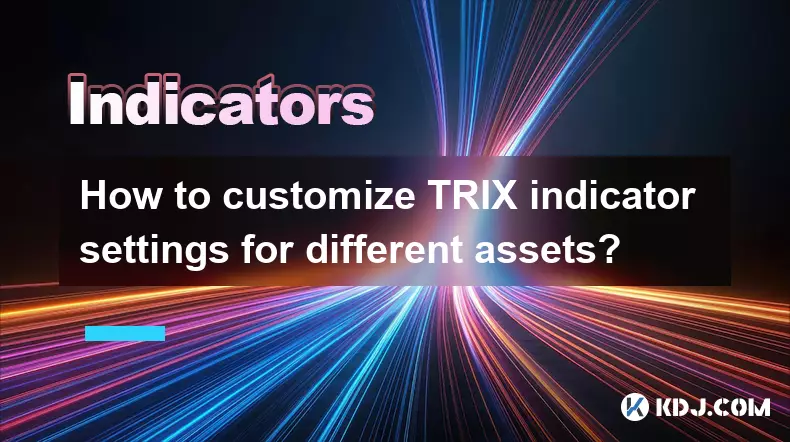-
 bitcoin
bitcoin $100977.009184 USD
-2.05% -
 ethereum
ethereum $3282.009150 USD
-3.23% -
 tether
tether $0.999813 USD
-0.02% -
 xrp
xrp $2.208254 USD
-4.89% -
 bnb
bnb $951.411089 USD
0.55% -
 solana
solana $155.761205 USD
-2.84% -
 usd-coin
usd-coin $1.000217 USD
0.02% -
 tron
tron $0.284475 USD
-1.28% -
 dogecoin
dogecoin $0.162363 USD
-1.53% -
 cardano
cardano $0.533988 USD
-0.47% -
 hyperliquid
hyperliquid $39.174339 USD
-3.22% -
 chainlink
chainlink $14.724828 USD
-1.16% -
 bitcoin-cash
bitcoin-cash $477.297986 USD
-1.28% -
 zcash
zcash $554.227426 USD
17.30% -
 ethena-usde
ethena-usde $0.998995 USD
-0.03%
Will the RSI fall after the top divergence? How to improve the judgment accuracy?
RSI top divergence often signals weakening momentum in crypto, but it doesn't guarantee an immediate price drop, requiring confirmation from volume, candlestick patterns, and other indicators for reliable trading decisions.
Jun 13, 2025 at 11:21 pm

Understanding RSI and Top Divergence in Cryptocurrency Trading
The Relative Strength Index (RSI) is a momentum oscillator widely used in cryptocurrency trading to measure the speed and change of price movements. It typically ranges from 0 to 100, with levels above 70 considered overbought and below 30 considered oversold. In crypto markets, where volatility is high, understanding how RSI behaves during divergences becomes crucial.
Top divergence, also known as bearish divergence, occurs when the price makes a new high but the RSI fails to confirm that high and instead forms a lower peak. This often signals weakening momentum and a potential reversal. However, many traders question whether the RSI will always fall after such a divergence.
Does the RSI Always Fall After a Top Divergence?
In most cases, yes, the RSI tends to decline after a top divergence, but it's not guaranteed. The key point here is that divergence highlights a discrepancy between price action and momentum, not an immediate sell signal. There are instances where the market may continue trending despite divergence, especially during strong bullish phases or amid significant news events affecting cryptocurrencies like Bitcoin or Ethereum.
For example, during a bull run, price can keep pushing higher even if RSI shows weaker momentum. This phenomenon is sometimes referred to as 'divergence extension.' Therefore, while top divergence indicates potential weakness, it should not be used in isolation for decision-making.
How to Confirm RSI Top Divergence Accurately
To improve accuracy in identifying and acting on top divergence, traders should follow several steps:
- Plot RSI correctly: Use a standard 14-period setting unless backtesting proves another value more effective for your strategy.
- Draw trend lines on both price and RSI: A clear mismatch between the two confirms divergence.
- Use candlestick patterns for confirmation: Bearish patterns like shooting stars or evening stars near resistance can reinforce the divergence signal.
- Check volume indicators: Declining volume during rising prices adds weight to the idea that the uptrend is losing strength.
- Look at multiple timeframes: Confirming divergence on both higher and lower timeframes increases reliability.
These checks help filter out false signals and ensure you're not reacting prematurely to a divergence that might not lead to a reversal.
Combining RSI with Other Indicators for Better Accuracy
Relying solely on RSI can lead to misinterpretations. To enhance judgment accuracy, consider integrating other tools:
- Moving Averages: When RSI shows top divergence and price crosses below a key moving average (like the 50-day or 200-day), it strengthens the bearish case.
- MACD (Moving Average Convergence Divergence): If MACD also starts to show bearish crossovers or declining histogram bars alongside RSI divergence, this reinforces the signal.
- Fibonacci Retracement Levels: Identifying where the current price stands relative to key Fibonacci levels helps assess support/resistance zones where reversals are more likely.
- Volume Profile: A sudden drop in buying pressure shown through volume profile can corroborate RSI divergence.
Using these additional layers ensures that traders don't act on noise and have a clearer picture of market sentiment.
Practical Tips for Using RSI Divergence in Crypto Markets
Given the high volatility and frequent pump-and-dump scenarios in crypto, applying RSI divergence requires caution and adaptability:
- Avoid trading divergence in low liquidity pairs: Illiquid altcoins may produce misleading RSI readings due to erratic price swings.
- Wait for candle closure: Never trade based on intrabar divergence; wait for the candle to close to confirm the pattern.
- Set realistic stop losses: Since divergence doesn’t guarantee immediate reversal, place stop losses beyond recent swing highs to avoid being stopped out prematurely.
- Test strategies on historical data: Backtest your approach using past data to see how well divergence has worked in similar market conditions.
- Monitor macroeconomic factors: Events like Federal Reserve decisions or regulatory changes can override technical signals, so stay informed about broader developments.
These practical considerations help traders navigate the complexities of crypto markets more effectively when dealing with RSI divergence.
Frequently Asked Questions
Q: Can RSI divergence occur in sideways markets?Yes, RSI divergence can appear in ranging or sideways markets. In such cases, it often signals a potential breakout rather than a reversal. Traders should look for price breaking key support or resistance levels before acting.
Q: Is divergence more reliable on higher timeframes?Generally, divergence observed on higher timeframes like the 4-hour or daily chart is more reliable than on shorter intervals. Higher timeframes filter out noise and provide stronger context for price action.
Q: How long does it take for RSI to react after a top divergence?There’s no fixed timeframe. Sometimes the RSI drops immediately, while in other cases, it may take several candles for the momentum shift to translate into price movement. Patience and confirmation are essential.
Q: Should I ignore RSI divergence if volume remains high?Not necessarily, but high volume during divergence suggests continued interest despite weakening momentum. It could indicate a strong accumulation phase or a late-stage rally. Combining volume analysis with order book depth may offer better insights.
Disclaimer:info@kdj.com
The information provided is not trading advice. kdj.com does not assume any responsibility for any investments made based on the information provided in this article. Cryptocurrencies are highly volatile and it is highly recommended that you invest with caution after thorough research!
If you believe that the content used on this website infringes your copyright, please contact us immediately (info@kdj.com) and we will delete it promptly.
- BlockDAG, Avalanche, Dogecoin: Crypto's Leading Trio in 2025
- 2025-11-07 22:05:01
- Layer 2 Coins: Will There Be a Potential Explosion by 2026?
- 2025-11-07 16:50:02
- Filecoin, ICP, and the AI Infrastructure Renaissance: Is History Repeating?
- 2025-11-07 16:50:02
- Bitcoin's Wild Ride: Surges, Zeros, and the Search for Stability
- 2025-11-07 17:05:01
- XRP, Bitcoin, and the Rally: What's the Deal, New York?
- 2025-11-07 17:25:01
- Filecoin, DePIN, and a Technical Breakout: What's the Buzz?
- 2025-11-07 17:05:01
Related knowledge

How do professional traders use the TRIX indicator?
Nov 06,2025 at 04:40pm
Understanding the TRIX Indicator in Crypto TradingThe TRIX (Triple Exponential Average) indicator is a momentum oscillator used by professional trader...

Can I use the TRIX indicator on my mobile trading app?
Nov 07,2025 at 07:40pm
The TRIX indicator, a momentum oscillator designed to filter out short-term fluctuations and highlight long-term trends, has become increasingly popul...

How to code a simple TRIX indicator script in Pine Script?
Nov 07,2025 at 06:20am
How to Code a Simple TRIX Indicator in Pine Script The TRIX (Triple Exponential Moving Average) indicator is widely used in cryptocurrency trading to ...

How to trade TRIX indicator signals on the 1-hour chart?
Nov 07,2025 at 05:39am
Bitcoin's Role in Decentralized Finance1. Bitcoin remains the cornerstone of decentralized finance, serving as a benchmark for value and security acro...

Can the TRIX indicator be used for long-term investing?
Nov 06,2025 at 02:19pm
Understanding the TRIX Indicator in Cryptocurrency Markets1. The TRIX (Triple Exponential Average) indicator is a momentum oscillator designed to filt...

How to customize TRIX indicator settings for different assets?
Nov 06,2025 at 03:39pm
Understanding the TRIX Indicator in Cryptocurrency Trading1. The TRIX (Triple Exponential Average) indicator is a momentum oscillator designed to filt...

How do professional traders use the TRIX indicator?
Nov 06,2025 at 04:40pm
Understanding the TRIX Indicator in Crypto TradingThe TRIX (Triple Exponential Average) indicator is a momentum oscillator used by professional trader...

Can I use the TRIX indicator on my mobile trading app?
Nov 07,2025 at 07:40pm
The TRIX indicator, a momentum oscillator designed to filter out short-term fluctuations and highlight long-term trends, has become increasingly popul...

How to code a simple TRIX indicator script in Pine Script?
Nov 07,2025 at 06:20am
How to Code a Simple TRIX Indicator in Pine Script The TRIX (Triple Exponential Moving Average) indicator is widely used in cryptocurrency trading to ...

How to trade TRIX indicator signals on the 1-hour chart?
Nov 07,2025 at 05:39am
Bitcoin's Role in Decentralized Finance1. Bitcoin remains the cornerstone of decentralized finance, serving as a benchmark for value and security acro...

Can the TRIX indicator be used for long-term investing?
Nov 06,2025 at 02:19pm
Understanding the TRIX Indicator in Cryptocurrency Markets1. The TRIX (Triple Exponential Average) indicator is a momentum oscillator designed to filt...

How to customize TRIX indicator settings for different assets?
Nov 06,2025 at 03:39pm
Understanding the TRIX Indicator in Cryptocurrency Trading1. The TRIX (Triple Exponential Average) indicator is a momentum oscillator designed to filt...
See all articles





















![The Graph Price Prediction [GRT Crypto Price News Today] The Graph Price Prediction [GRT Crypto Price News Today]](/uploads/2025/11/07/cryptocurrencies-news/videos/690d4df44fe69_image_500_375.webp)




















































